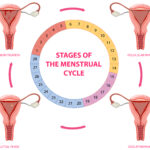FREE SHIPPING OVER $50
Dizzy and Off-Balance? These Yoga Poses Could Be the Natural Fix for Vertigo

That feeling of the room spinning is more than just a momentary discomfort. It can be terrifying, disorienting, and debilitating, making simple tasks feel impossible. If you’ve ever experienced vertigo or persistent dizzy spells, you know the desperation to find a solution—a way to find relief without constantly reaching for medication. The constant feeling of being off-balance can make you feel like you’ve lost control of your body.
But what if the solution to your vertigo isn’t a pill or a procedure, but a simple, ancient practice? For many, the answer lies in a gentle, mindful approach to movement. Yoga, with its focus on balance, body awareness, and a calm mind, can be a powerful natural fix for dizziness and a way to reclaim your stability. We are going to dive into the science behind how yoga can help, and then we will give you a simple routine of specific poses that can ease your symptoms and get you back on steady ground.
The Science Behind Vertigo and Yoga
To understand how yoga can help, it’s important to understand what vertigo actually is. It’s a sensation of spinning or moving, even when you are perfectly still. It’s often caused by an issue with your inner ear, specifically your vestibular system, which is the body’s control center for balance and spatial orientation. When the tiny crystals or fluid in your inner ear get out of place, it sends confusing signals to your brain, leading to that dizzying sensation.
- How Yoga Helps the Vestibular System: Yoga doesn’t physically move the crystals in your ear, but it does something equally powerful: it trains your brain and body to cope with the confusing signals. The slow, controlled movements and emphasis on balance help to gently desensitize and re-train your vestibular system. Think of it as physical therapy for your sense of balance.
- The Calming Effect on Your Mind: The anxiety and panic that often accompany a dizzy spell can make the symptoms worse. Yoga, with its focus on deep breathing and mindful awareness, helps to calm your nervous system, which in turn can reduce the intensity of your symptoms.
The Core Yoga Routine for Vertigo Relief
This routine is designed with a focus on stability and safety. The poses are gentle and do not require any intense twisting or quick movements. We will start with a foundational pose and slowly build from there, always prioritizing your comfort and balance.
1. Mountain Pose (Tadasana)
This is the most important foundational pose for anyone struggling with dizziness. It may seem simple, but it is a powerful way to ground yourself and establish a sense of stability.
- How to do it: Stand with your feet together or hip-width apart. Root your feet into the floor, distributing your weight evenly. Straighten your legs but don’t lock your knees. Engage your core, keep your shoulders relaxed, and lengthen your spine.
- Why it helps: This pose trains you to feel stable and balanced on your own two feet. It’s an excellent way to check in with your body before you begin more challenging movements.
2. Tree Pose (Vrksasana)
This pose is a classic for improving balance, and it’s a perfect way to challenge your vestibular system gently and safely.
- How to do it: Begin in Mountain Pose. Shift your weight to your right foot. Slowly lift your left foot and place the sole on the inside of your right ankle or shin (avoiding the knee joint). Hold onto a wall or a chair for support if you need it.
- Why it helps: By practicing this pose, you are gently challenging your brain to maintain balance, which helps to re-train the pathways in your vestibular system.
3. Half-Moon Pose (Ardha Chandrasana)
This pose is excellent for building core strength and improving overall balance.
- How to do it: From a standing position, you can use a wall for support. Take a block or a few books and place them on the floor for your hand. Bend down, planting your hand on the block, and then extend your back leg up, opening your hips.
- Why it helps: This pose strengthens the muscles that support your balance and helps your body become more aware of its position in space.
4. Seated Forward Fold (Paschimottanasana)
This pose is a wonderful way to stretch your hamstrings and calm your nervous system.
- How to do it: Sit on the floor with your legs extended in front of you. Gently hinge at your hips and reach forward. You don’t have to touch your toes. Just go as far as you can while keeping your back straight.
- Why it helps: Forward folds can be tricky for those with vertigo, as they can trigger dizziness. But when done mindfully, they can help you get used to changes in your head’s position. Go very slowly, and rest in Child’s Pose if you feel any discomfort.
5. Child’s Pose (Balasana)
This pose is your go-to “reset” button. It’s a safe, calming posture that you can return to at any point during your practice.
- How to do it: Start on your hands and knees. Gently lower your hips back to your heels, bringing your forehead to the floor or to a block. Rest your arms alongside your body.
- Why it helps: This pose is deeply calming and grounding. It helps to quiet the nervous system, which can reduce the anxiety and physical symptoms of a dizzy spell.
A Simple, Step-by-Step Routine
Practice this routine daily or as often as you can. The key is consistency and patience.
- Start in Mountain Pose: Stand for a few moments, feeling your feet on the ground.
- Move to Tree Pose: Hold for 15-30 seconds on each leg, using a chair or wall for support.
- Practice Half-Moon Pose: Hold for 15-30 seconds, using a chair or wall.
- Transition to Seated Forward Fold: Hold for 30-60 seconds, going slowly and listening to your body.
- Finish in Child’s Pose: Hold for 1-2 minutes, focusing on your breath.
Safety First: Essential Tips for Practicing Yoga with Vertigo
Your safety is the most important part of this practice. Always listen to your body and never push through pain or severe dizziness.
- Go Slow, Always: Avoid quick head movements, twists, or transitions. Move mindfully and with control.
- Use Props: A sturdy chair, a wall, or a yoga block can be your best friends. There is no shame in using props for support.
- Keep Your Eyes Fixed: In balancing poses like Tree Pose, find a fixed point (drishti) in front of you and focus your gaze on it. This helps your brain maintain balance.
- Breathe Deeply: Focusing on your breath can calm your nervous system and reduce anxiety.
- Hydrate: Dehydration can contribute to dizziness. Make sure you are drinking enough water throughout the day.
Other Ways to Manage Dizziness
While yoga is a powerful tool, it’s part of a larger picture. For long-term relief, consider these additional health strategies.
- Work with a Professional: Consult with your doctor or a physical therapist. They can confirm the cause of your vertigo and may recommend other treatments.
- Diet and Nutrition: Staying hydrated and avoiding caffeine and alcohol can help reduce dizziness in some people.
- Stress Management: Chronic stress can worsen symptoms. Practices like meditation or spending time in nature can help.
Reclaiming Your Balance
Vertigo can make you feel helpless, but it doesn’t have to define your life. By incorporating a simple, mindful yoga routine into your daily life, you are not just performing poses—you are retraining your brain, calming your nervous system, and empowering yourself to take control of your health. Relief is possible, and with consistency, you can find your ground, reclaim your balance, and move through the world with confidence once again.
Related Articles
- Bloated After Eating? These 5 Yoga Poses Work Like Magic for Digestion
- Over 60 and Fitter Than Most 30-Year-Olds—This Couple’s At-Home Routine Is Shocking Trainers
- Beginner to Fit in 30 Days—No Gym, No Excuses, Just Results
- 30 Days. 3,000 Biceps Curls. The Results Were Not What I Expected
- The Swiss Ball Leg Curl: The One Move That Builds Hamstrings and Core—Fast







